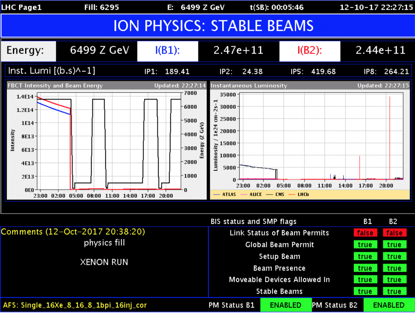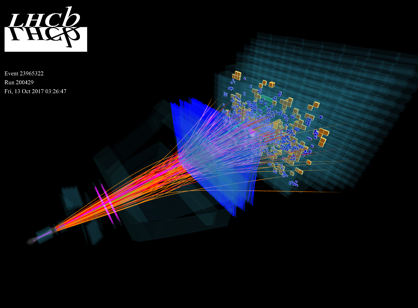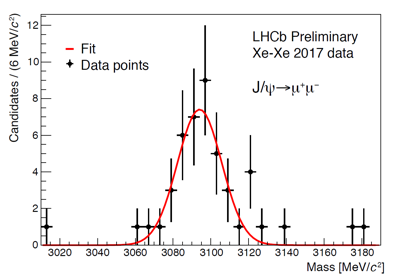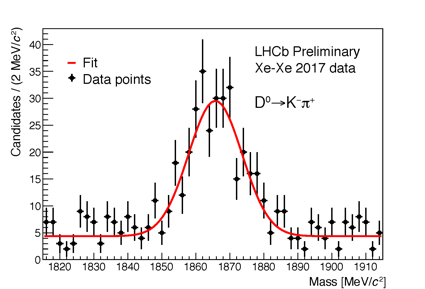Yesterday evening the first xenon-xenon ion collisions took place at LHC and the run lasted for seven hours. The left image below shows the corresponding LHC control screen announcing the “Stable Beam” conditions for the data taking. The right image shows a collision event recorded and analysed online by the LHCb data acquisition system.
The images below show the invariant mass distribution of J/ψ mesons decaying to two muons and that of charmed D0 mesons decaying to K and π mesons promptly reconstructed by the LHCb software trigger. Heavy ion collisions are studied at LHCb in order to understand the behaviour of the so-called quark-gluon plasma, a state of matter in which quarks and gluons are moving as free particles, similarly to what happened in the first instants of time after the Big Bang. At the LHC, the properties of the quark-gluon plasma are usually studied in collisions of lead nuclei. Although there are no plans to use xenon-xenon collision for this purpose in the near future, one day of the LHC time was devoted to these collisions in order to study the properties of nuclear matter at high-energy density and high temperature. The comparison of experimental measurements in lead-lead and in xenon-xenon collisions will bring new insights into the properties of the quark-gluon plasma.
Read more about the LHCb’s heavy ion collision studies in this page [1], [2], [3], as well as in the CERN update on the xenon-xenon run in English and French.




